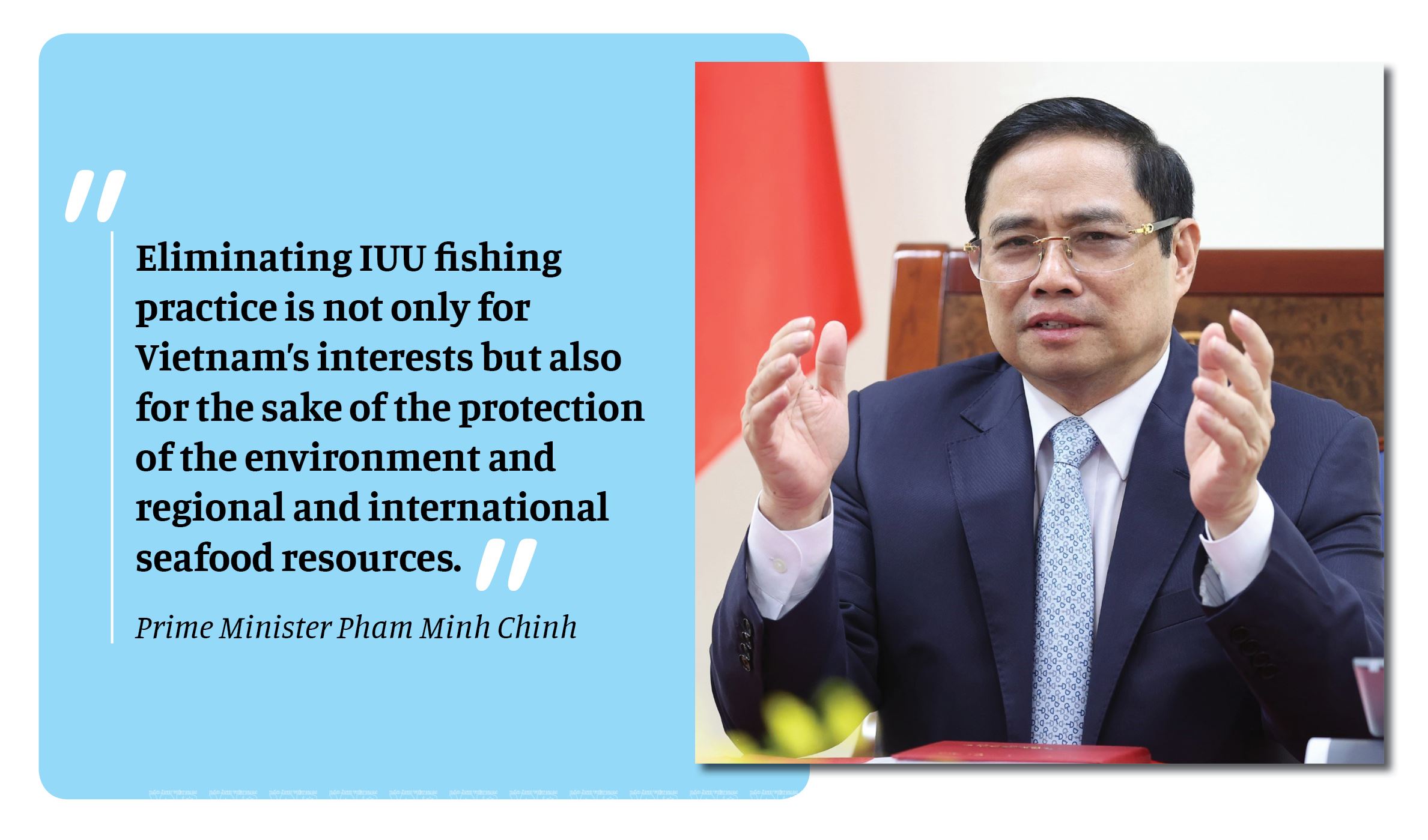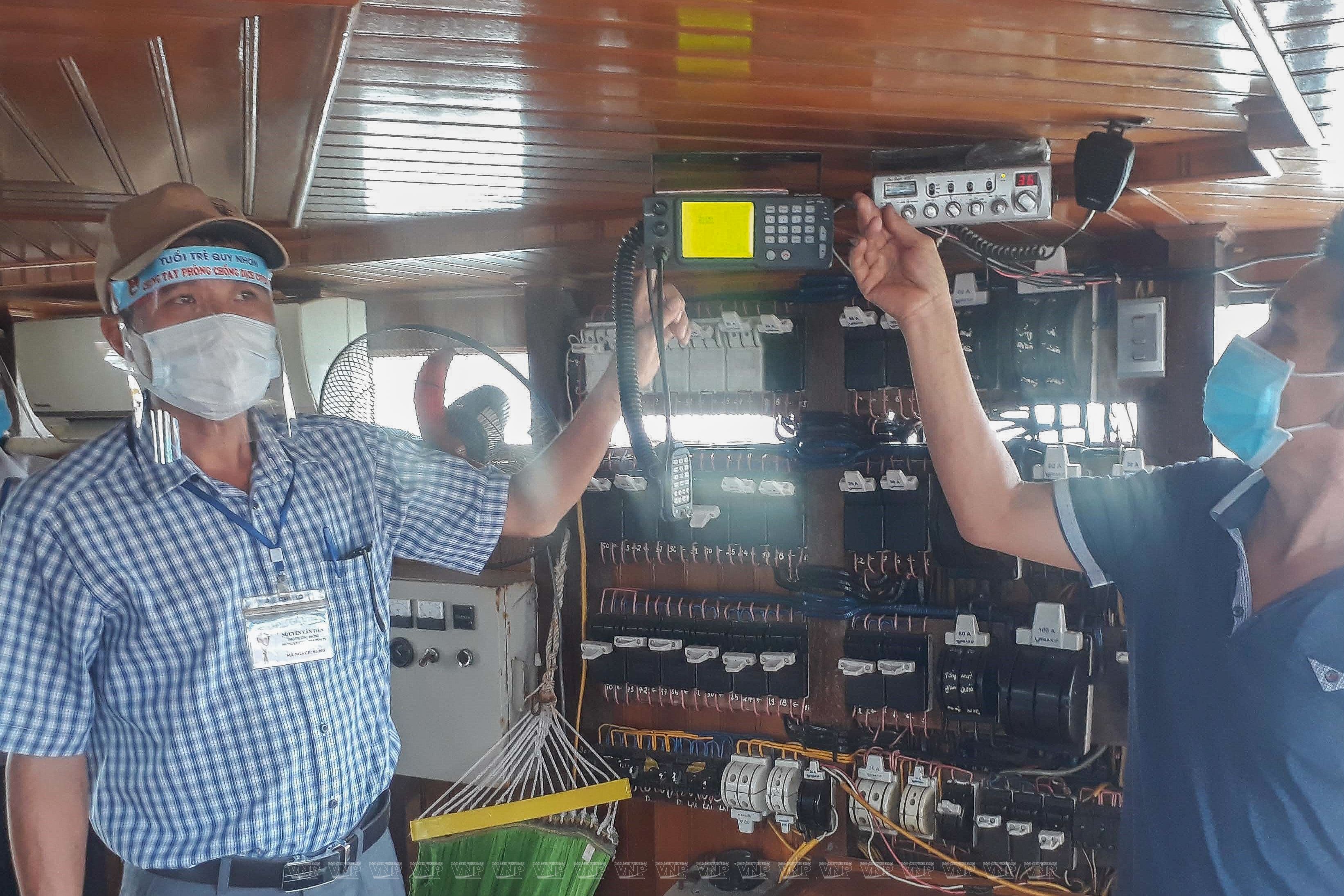Vietnam determined to remove EC’s “yellow card”
Vietnam’s Ministry of Agriculture and Rural Development is implementing solutions to have the EC’s "yellow card" warning lifted, considering this a key task in 2022.

Over the years, Vietnam’s fisheries have become one of the key economic sectors, contributing significantly to Vietnam's socio-economic development. However, managing this sector remains challenging due to several shortcomings and limitations, which makes the industry development unsustainable and does not fully meet legal regulations.
On October 23, 2017, the EC gave a "yellow card" warning for Vietnamese seafood exported to the European market, indicating those products did not fully comply with IUU fishing regulations.
After more than 5 years, the efforts of the government, ministries and agencies, as well as 28 coastal provinces and cities has made striking improvements in this field. For example, cases of Vietnamese fishing vessels violating other countries’ waters have decreased in numbers compared to previous years.
In order to have the "yellow card" fully lifted, the Vietnam Directorate of Fisheries has advised the Ministry of Agriculture and Rural Development to direct localities to adjust seafood certification, because incorrect certification is one obstacle to overcome in order to export to the European market. The whole country currently has 16 out of 28 coastal provinces and cities certifying aquatic products exported to the European market.
According to the General Director of the Directorate of Fisheries Tran Dinh Luan, four groups of EC recommendations on yellow cards have been implemented. The Ministry of Agriculture and Rural Development and the Directorate of Fisheries have also deployed more than 10 IUU inspection missions.
After each inspection, and especially after the meeting chaired by the Prime Minister with 28 coastal provinces and cities, there has been remarkable progress. The awareness of the people and government officials has been enhanced. Fishermen now understand and follow dutifully the requirement of submitting fishing logs. Only a very small number violate the requirements deliberately.
In addition, the installation of vessel monitoring systems has now reached 92% on ships with a length over 15m. For the rest, localities are required to install monitoring devices for vessels going fishing, while shore-based vessels must inform their hometown, base and owners for management purposes.
“The most important thing for now is law enforcement and abidance. The number of vessels has decreased in line with the orientation of the Vietnam Fisheries Development Strategy until 2030, with a vision toward 2045. Completing the number of resources to restructure a suitable number of fishing vessels will boost productivity for fishermen, help them raise their income and encourage them to comply with regulations," said Tran Dinh Luan.
- Story: Phong Thu - Hong Hanh
- Photos: VNP, VNA
- Designer: Trang Nhung










 Representatives of fisheries sub-department of Phu Yen province release shrimp seed in Hon Yen area, An Hoa Hai commune, Tuy An district. Photo: VNA
Representatives of fisheries sub-department of Phu Yen province release shrimp seed in Hon Yen area, An Hoa Hai commune, Tuy An district. Photo: VNA